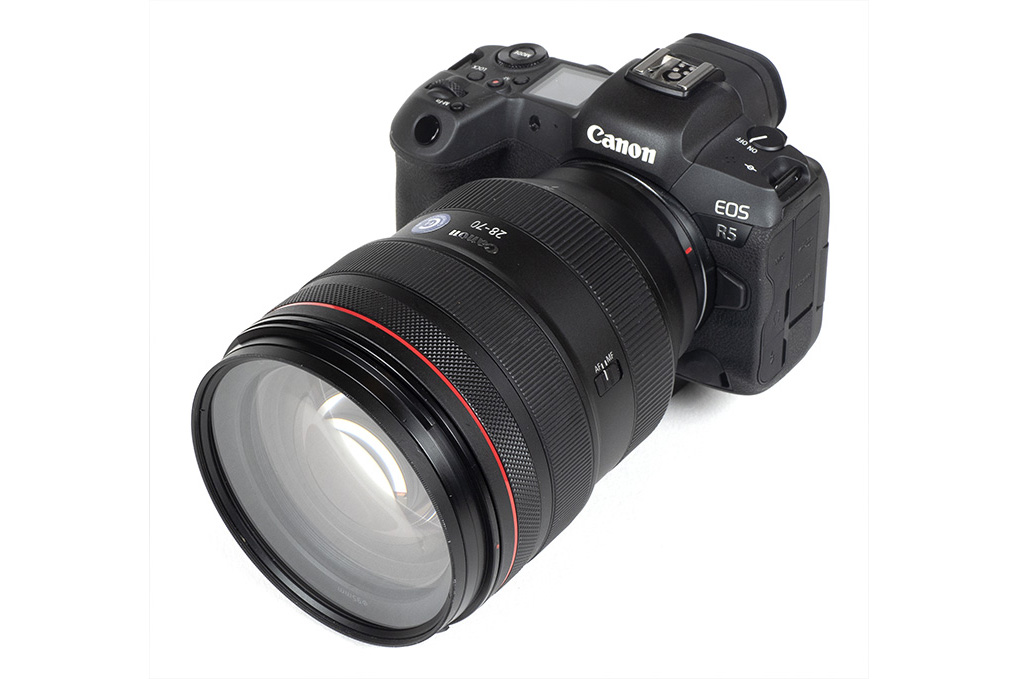Review by Klaus Schroiff, published April 2022
Introduction
The Canon RF 28-70mm f/2 USM L was one of the first lenses for the RF-mount cameras. You may also say that it was nothing short but a STATEMENT because it’s the world’s first full-format standard zoom lens with a constant max aperture of f/2. It supplements the RF 24-70mm f/2.8 USM L IS, so Canon users are blessed with two high-speed zoom lenses in this range class. The two lenses are fairly different so each one has its place with the RF 28-70mm f/2 USM L surely being the more exotic choice. Both lenses are expensive, of course, but the RF 28-70mm f/2 USM L is actually relatively affordable … in the grand scheme of things. As a rule of thumb, the price tends to double per extra full stop, but the difference between the two is “merely” 1/3rd, although you have to take the slightly reduced range and the lack of an image stabilizer into account here. At $3100/3500EUR, it’s still far from what normal mortals tend to spend on a standard zoom lens. However, this lens may just be the right thing for professional users who want the speed of prime lenses while having the flexibility of a zoom lens.

However, upon first contact, you may understand why this is more of a niche product. It’s huge by standard zoom standards – or to be precise – it is both heavy and FAT. The filter diameter of 95mm may give you an idea here. In terms of build quality, the Canon RF 28-70mm f/2 USM L IS delivers everything you expect from such a professional-grade lens. The materials are top-notch and everything is tightly assembled. Both the super-sized zoom and focus rings operate smoothly. Typical for many RF lenses, it features a dedicated, configurable control ring at the front. e.g. if you like to have aperture- or ISO-control on the lens, just go for it. The inner lens tube extends when zooming towards the long end of the range, which is not ideal for protecting it against the elements. However, Canon claims that the lens is weather resistant. Fluorine coating on the front element is supposed to repel dust and fluids. A petal-shaped hood is part of the package.
The ring-type USM (ultrasonic) combines extremely high speed and noiseless operations. Manual focusing works “by-wire” thus, you drive the AF when turning the focus ring. The lens is not ideal for videos – changing focus results in substantial focus breathing.
| Specifications | |
|---|---|
| Optical construction | 19 Elements in 13 Groups inc. 1xSUD, 3xUD & 4x aspherical elements |
| Number of aperture blades | 9 (rounded) |
| min. focus distance | 0.39m (max. magnification ratio 1:5.55) |
| Dimensions | 139.8×103.8mm |
| Weight | 1430g |
| Filter size | 95mm |
| Hood | petal-shaped (bayonet mount, supplied) |
| Other features | weather-sealing, additional control ring, fluorine coating |
Distortion
The Canon RF 28-70mm f/2 USM L produces a medium barrel distortion of 2.8% at 28mm. Images are pretty much distortion-free around 40mm and the distortions increase towards slight pincushion type at 70mm.
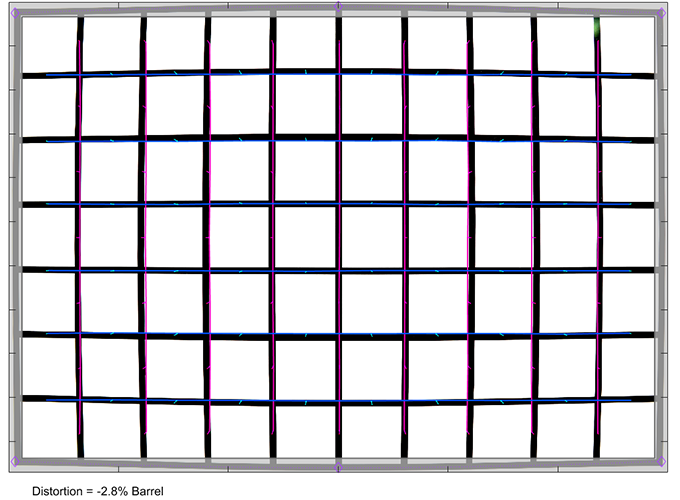
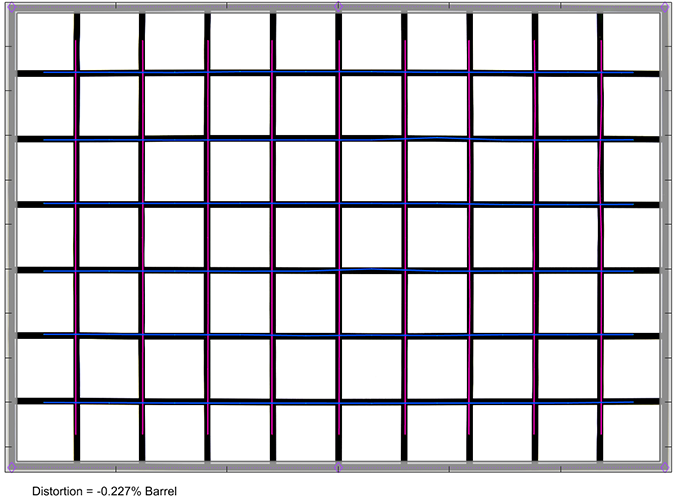

Of course, this is all mostly irrelevant (other than a slight decrease in corner resolution) with activated image auto-correction as you can see below.



Vignetting
The native vignetting characteristic is on the high side but this is to be expected regarding the large max aperture. At f/2 the light falloff peaks at almost 3 EV (f-stops) at 28mm f/2 and it’s just marginally less at 40mm and 70mm. Stopping down to f/2.8 reduces the issue by about 1 EV and it’s mostly acceptable from f/4 onward.

Once again, if you prefer to activate image auto-correction, the algorithm reduces the fall-off substantially, although you may still spot a bit at f/2.

MTF (resolution at 45 megapixels)
The Canon RF 28-70mm f/2 USM L delivers great quality even on a high-megapixel sensor. The sweet spot is at 28mm, where the results are impeccable at all settings. This remains mostly true at 40mm. The broader center is a bit better still, whereas the outer image field is a tad worse at 40mm f/2. There’s a more noticeable drop at 70mm. The center quality is still excellent, but the corners are “merely” good to very good here.
The field curvature is low. The centering quality of the tested sample was good.
Please note that the MTF results are not directly comparable across the different systems!
Below is a simplified summary of the formal findings. The chart shows line widths per picture height (LW/PH) which can be taken as a measure of sharpness. If you want to know more about the MTF50 figures, you may check out the corresponding Imatest Explanations.

MTF (resolution at 30 megapixels)
If you are using a lower-megapixel body, the subjective quality perception will be even better, of course. The results are just stellar at 28mm and 40mm. The slight decrease in quality in the outer image region at 70mm is also present here but the resolution is still very good.

Chromatic Aberrations (CAs)
Lateral CAs (color shadows in the outer image field) are exceptionally low at all aperture and zoom settings.

Bokeh
The primary differentiator of the RF 28-70mm f/2 USM L is, of course, its speed. f/2 is fast even by prime lens standards, and besides its primary optical characteristics, it’s also the bokeh that this lens is all about.
Out-of-focus highlights show a subtle onion-like substructure – probably related to the 3 aspherical elements in the design. There is no obvious outlining at the edges. The highlights remain circular from f/2 to f/4 – thanks to the 9 rounded aperture blades.

The shape of the highlights tends to deteriorate towards the image corners – due to mechanical vignetting. However, the Canon behaves better than most in this respect in that the shape deteriorates “late”. As you can observe below, only the corner highlights are “cut”. Stopping down f/2.8 restores the corner highlights already.

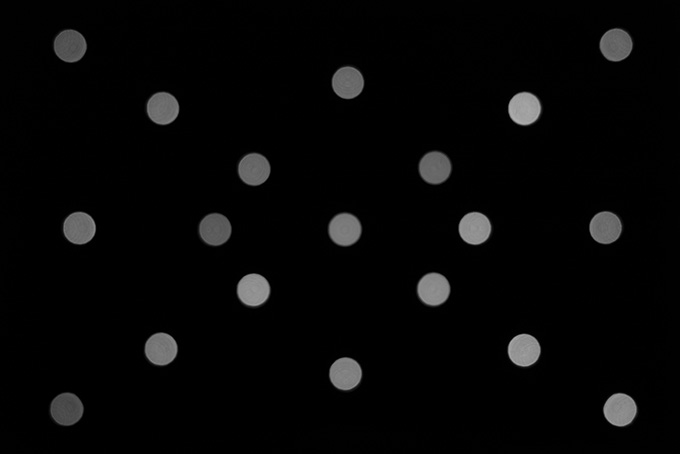
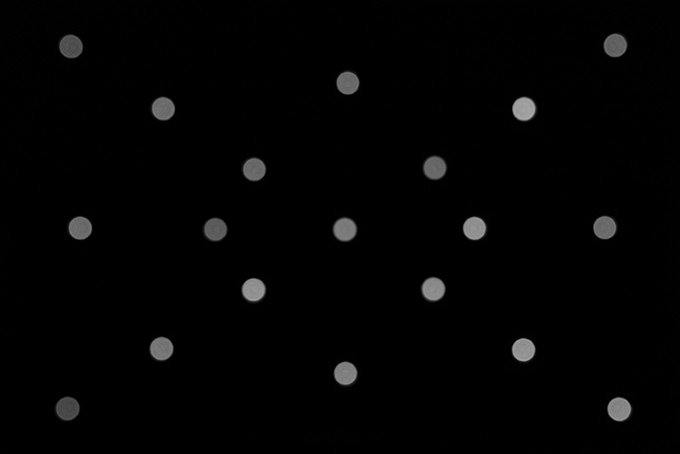
The general rendition in the focus transition zones isn’t perfect but still quite smooth both in the background (to the left below) as well as the foreground (to the right).

Bokeh Fringing (LoCA)
Bokeh fringing – also referred to as LoCAs – is a color fringing effect on the Z-axis. It shows up as purplish halos in front of the in-focus zone and greenish beyond. The effect is visible at f/2. Stopping down to f/4 reduces the fringing to a negligible degree. Keep in mind that bokeh fringing is normal in all but a handful of very expensive APO lenses.



Competition
The Canon RF-mount is still a proprietary system with no license granted to third-party manufacturers. Thus the primary competitors are the in-house cousins, the Canon RF 24-70mm f/2.8 USM L IS and, certainly to a lesser degree, the RF 24-105mm f/4 USM L IS. There are further alternatives when using an EF-to-RF mount adapter. However, unless you have to have it as an interim solution, we wouldn’t recommend adapters really. As you can see below, the RF 28-70mm f/2 USM L (shown to the left) is in a league of its own size-wise – and rest assured – if you have to carry it through the day, you will suffer due to its heavy weight. Just based on its aperture, the choice isn’t straightforward, though. The 24-70mm and 24-105mm USM L IS feature image stabilizers; thus, they can have certain advantages in low-light situations despite the slower speed. However, the RF 28-70mm f/2 USM L is superior optically as well as in terms of depth-of-field potential. A 70mm f/2 is pretty good even by prime lens standards, whereas a 70mm f/2.8 or 105mm f/4 is nothing to write home about in this respect, really.

Sample Images
The Canon RF 28-70mm f/2 USM L is everything that you can expect from it - it is a monster of a lens with a monster performance. This is especially true for the broader center quality, which is as good as on the best prime lenses. The outer image field is also superb in the lower zoom range. The corners soften a bit at 70mm but remain easily on a good level. That's on a 45-megapixel sensor. On 20 to 30 megapixels, the lens is almost perfect. The native image distortions can be noticeable at 28mm but are not an issue beyond. The native vignetting is quite high at f/2, but that's no different from prime lenses. Auto-correction comes to the rescue in both cases, of course. Lateral CAs are absolutely negligible. The quality of the bokeh is good, but there is a little room for improvement here. However, that's complaining on a very high level, really. The rather massive focus-breathing isn't ideal for videos, though.
The build quality is excellent, which isn't surprising given its professional target audience. The materials and assembly quality are top-class. Weather sealing is a natural feature at this price point, anyway. Some may not like the extending zoom mechanism - but this is just normal for pretty much all standard zoom lenses. A bigger question mark may be around the handling, though. The lens is huge, and using the big zoom and focus ring isn't quite as comfortable as on the RF 24-70mm f/2.8 USM L IS. You may argue that this isn't any different from fast tele lenses, but the RF 28-70mm f/2 will be used mostly hand-held and, as such, it is front-heavy and unbalanced.
If you want the very best and fastest standard zoom lens, there is, the RF 28-70mm f/2 USM L is the one to go for - at least for photographic purposes. However, you should ask yourself whether you are ready for it. This just isn't your average fast standard zoom lens. It will leave you in awe, but as with all monsters, you will feel it after having battled with it for a long day.
-
Optical Quality
-
Build Quality
-
Price / Performance


